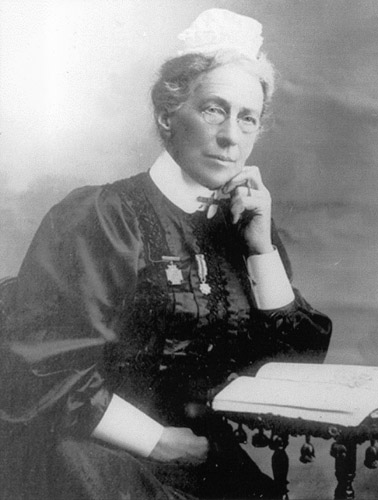
Here is a beautiful antique porcelain invalid feeder with a Meissen cobalt “Blue Onion” pattern (1) and gold band around rim, spout and handle. One would place a liquid or semi-soft food in the feeder and the spout was then placed in the person’s mouth. These feeders were sometimes used to feed babies as well.
(1) Onion pattern, originally named bulb pattern, is a white ware decorated with cobalt blue or pink. Although it is commonly associated with Meissen, other companies made the pattern in the late nineteenth and the twentieth centuries. The term “onion design” is erroneous. The design has nothing to do with the onion motif. Only one of the decorative elements on the plate edges, the pomegranate, remotely resembles the outline of an onion.

This invalid feeder is circa 1890-1900
Mark on base

Invalid Feeders – Pap boats – Pap Feeders
The term “pap,” allegedly derived from the Scandinavian for the sound made when a baby opens his mouth for nourishment, was probably introduced before its first recordings in literature in the mid 18th century. Recipes for pap usually called for bread, flour and water. A more nourishing mixture “panada” was a pap base with added butter and milk, or cooked in broth as a milk substitute. Variations on the ingredients included Lisbon sugar, beer, wine, raw meat juices and Castile soap. Drugs were sometimes added to “soothe the baby.”
The “pap boat” was designed to feed the mixture to babies and invalids. Resembling a sauce boat they were made of wood, silver, pewter, bone, porcelain, or glass. Implements for feeding proliferated in the 18th century as new materials and methods of production became accessible. Shapes were clever and varied. Some pap boats were closed, others looked like animals, most often a duck. Feeding cups of such design are still manufactured in some countries today.
Invalid feeders examples

















Prominent Nurses

Clara Barton (1821–1912), organized the American Red Cross

Ellen Dougherty (1844–1919), the first Registered Nurse

Jane Bell superintendent of Melbourne Hospital 1910-1934

Lillian Wald (1867–1940), regarded as the "founder of visiting nursing in America"

Louisa McLaughlin (1836-1921), one of the first British Red Cross nurses, served in two wars

Mary Ann Bickerdyke (1817–1901), nurse during the Civil War known as "Mother Bickerdyke"

Florence Nightingale (1820–1910), pioneer of modern nursing
Santa Filomena
by Henry Wadsworth Longfellow
(It is a tribute to nurse Florence Nightingale)
Whene’er a noble deed is wrought,
Whene’er is spoken a noble thought,
Our hearts, in glad surprise,
To higher levels rise.
The tidal wave of deeper souls
Into our inmost being rolls,
And lifts us unawares
Out of all meaner cares.
Honor to those whose words or deeds
Thus help us in our daily needs,
And by their overflow
Raise us from what is low!
Thus thought I, as by night I read
Of the great army of the dead,
The trenches cold and damp,
The starved and frozen camp,
The wounded from the battle-plain,
In dreary hospitals of pain,
The cheerless corridors,
The cold and stony floors.
Lo! in that house of misery
A lady with a lamp I see
Pass through the glimmering gloom,
And flit from room to room.
And slow, as in a dream of bliss,
The speechless sufferer turns to kiss
Her shadow, as it falls
Upon the darkening walls.
As if a door in heaven should be
Opened, and then closed suddenly,
The vision came and went,
The light shone was spent.
On England‘s annals, through the long
Hereafter of her speech and song,
That light its rays shall cast
From portals of the past.
A lady with a lamp shall stand
In the great history of the land,
A noble type of good,
Heroic womanhood.
Nor even shall be wanting here
The palm, the lily, and the spear,
The symbols that of yore
Saint Filomena bore.
*Saint Philomena is a patron of the sick
Read Full Post »







































































